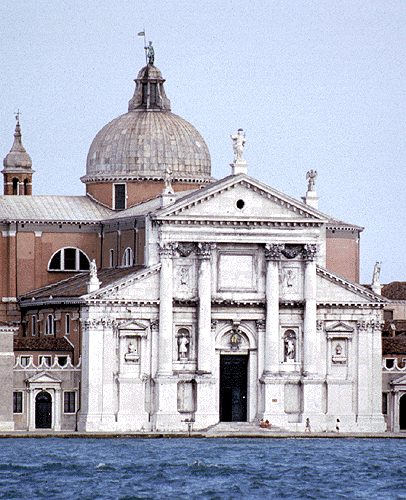Classicism: Meanings and Models
Derivation
The term "classicism" is derived from the term "class," which originally carried the connotation of high rank.
Definition of Classicism
Classicism is a noun referring to principles and styles associated with the cultures of ancient Greece and Rome. In Renaissance architecture, this is illustrated by the adoption of a Roman vocabulary and set of design principles. In Renaissance art, Roman influence is demonstrated by the adoption of ancient Roman types like marble portrait busts or decorative paintings consisting mainly of grotesques in imitation of the murals of the Domus Aurea.
Words Related to Classicism
Several terms derived from the term "classicism" are often used in discussions of Renaissance architecture.
●Classical. Classical is the adjective form of classicism.
●Classicizing. Classicizing is a variant of classical that refers to something that embodies or displays classical qualities. This term is often used when referring to classical style in post-antique periods.
●Classic. A classic refers to an exemplar of any time or style, to something of recognized value, or to something that is characteristic or typical.
Frames of Reference for "Classical"
The following contexts for the term "classical" are especially relevant to discussions of Renaissance architecture.
●Cultures of ancient Greece and Rome. "Classical" is often used to refer to the cultures of ancient Greece and Rome. The architecture of these ancient civilizations was embodied in their temples, which utilized an architectural vocabulary known as the orders.
●Principles of harmony and balance. "Classical" is also used to refer to a set of design principles and qualities associated with Greece and Rome such as simplicity, symmetry, regularity, and harmonious proportions.
●Classification of Greek art. In the context of Greek art, "Classical" refers to a particularly admired stylistic period between the Archaic and Hellenistic periods.
●Idealization of subjects in art. In art, "classical" may refer to the idealization of subjects in art. Idealization was a characteristic of much of Greek and Roman sculpture, which often depicted figures with the bodies of athletes. In the Renaissance many depictions treated the subjects as embodiments of perfection rather than as specific individuals with distinct features. Similarly, horses were depicted with heads held high and muscles bulging. Idealized architecture was often grand and without parallel to known structures.
●Stylistic antithesis of romanticism. "Classical" may be used in a broad sense to refer to the antithesis of emotionally expressive styles in art. In the history of art, the contrast between work that favors the analysis of form and work that favors the expression of emotion can be identified with pairs of stylistic periods like the Renaissance (15th and 16th centuries) versus the Baroque (17th century) and Neoclassicism (mid-18th through early-19th centuries) versus Romanticism (early to mid-19th century). These poles are also represented in the work of individual artists like the Renaissance painters Leonardo da Vinci versus Tintoretto and the post-Impressionist painters Cezanne versus his contemporary Van Gogh.
Moral Attitudes
In periods of classical revival like the Renaissance and the Neoclassical period, some aspects of classical civilization were regarded as morally superior, and its art forms were revered as models to be imitated.
ARCHITECTURAL MODELS OF CLASSICISM
The Transmission of Roman Influence
The architectural traditions of ancient Rome were passed on to architects of the Renaissance through individual buildings and the building types they established cumulatively, as well as through documents, especially Vitruvius' treatise on architecture, which was the only such work to survive.
Architects in Rome
As the former capitol of the Roman Empire, the city of Rome contained the largest concentration of Roman models to be found. The major architectural monuments and ruins that survived there exerted enormous influence on the many Renaissance architects who went to Rome to study ancient sites.
Rome also attracted architects and artists due to the large number of artistic commissions available, many of which were papal commissions or commissions from wealthy Roman noble families.
Surviving Structures in Rome
Although damaged by time, neglect, and the removal of architectural elements in the Middle Ages and Renaissance for re-use in new construction, many ancient structures were fairly well preserved in the Renaissance and remain so today.
Ruins in Rome
Many other structures had become ruins by the Renaissance, but enough of them remained to give a clear impression of their original scale and design.
♦Temple of Vesta at the Forum Romanum
Forums in Rome
The richest concentration of surviving Roman architecture was in the part of Rome containing the Roman forums.
Other Ancient Sites
Ancient buildings could also be seen in many other areas of Italy and around the Mediterranean.



 Add Placemark
Add Placemark Go Back
Go Back 





